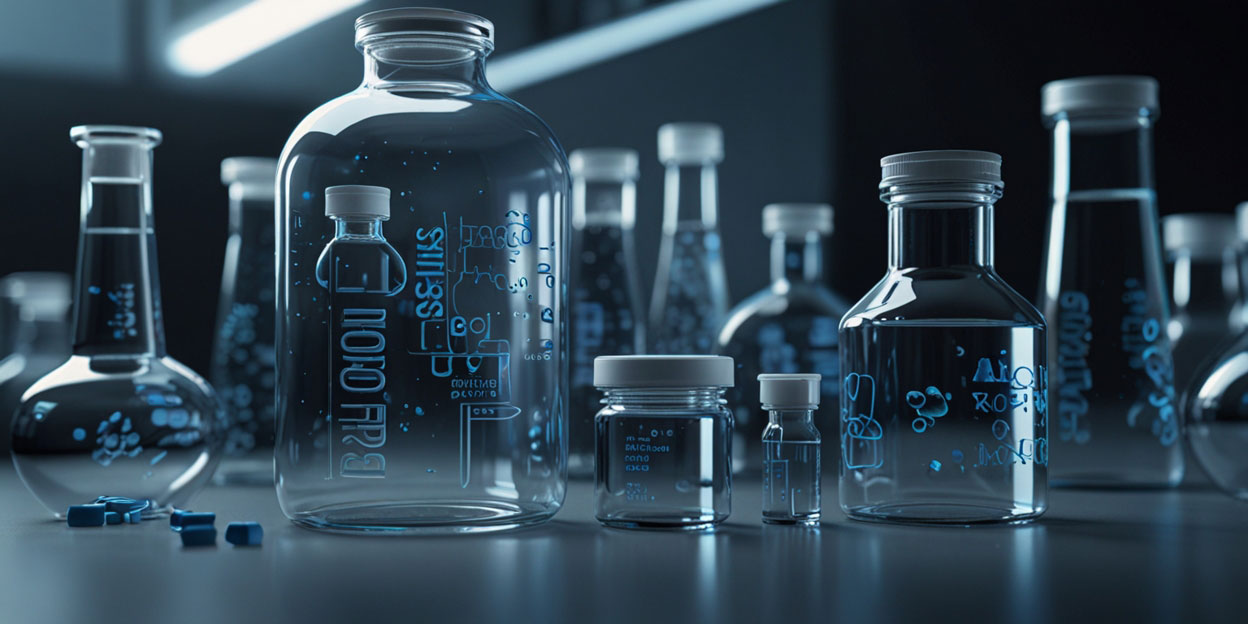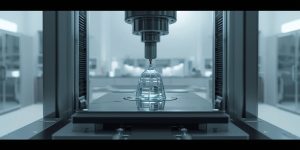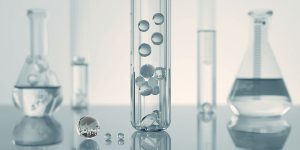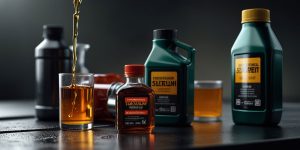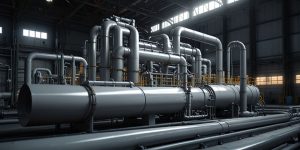Polypropylene (PP) is one of the most widely used thermoplastics in the world. From packaging films and automotive parts to medical devices and consumer products, PP has become a material of choice due to its excellent balance of chemical resistance, durability, cost-efficiency, and processability. Whether you’re an engineer designing structural components or a packaging manufacturer seeking transparency and impact resistance, understanding the full potential of polypropylene can help you make smarter material choices.
In this comprehensive guide, we explore everything you need to know about polypropylene from its origins and chemical structure to its types, advantages, limitations, and a detailed comparison with other polymers. If you’re looking to choose the right PP grade for your application, this article of SiNDA will provide the insights you need.
What Is Polypropylene (PP)?
Polypropylene is a semi-crystalline, linear hydrocarbon polymer classified as a polyolefin. Its general chemical formula is (C₃H₆)ₙ, composed entirely of carbon and hydrogen atoms. PP is produced through the polymerization of propylene monomers and is known for its excellent heat resistance, lightweight nature, and high chemical stability.
PP exists in both plastic and fiber forms and is suitable for a wide range of applications, including rigid containers, automotive parts, textile fibers, pipes, films, and sheets. It stands out for its ability to be molded into complex shapes and its cost-effectiveness compared to alternative engineering plastics.
History and Development of Polypropylene
The development of polypropylene can be traced back to the early 1950s when German chemist Karl Ziegler and Italian scientist Giulio Natta made groundbreaking advancements in polymer chemistry. In 1954, Natta successfully produced the first isotactic polypropylene using a catalyst developed by Ziegler. This stereoregular polymer was capable of crystallizing, opening new possibilities in plastics manufacturing.
By 1957, commercial production of polypropylene began, and since then, its use has grown exponentially across global markets. PP quickly replaced materials like cellophane, jute, and even metals in many applications due to its lower cost, lighter weight, and superior performance.
Today, PP is the second-most-used plastic worldwide after polyethylene, with extensive applications in packaging, automotive, consumer goods, textiles, and medical products.
Chemical Structure and Molecular Configurations
Polypropylene is a saturated polymer with a repeating unit of –CH₂–CH(CH₃)– . The presence of the methyl group (–CH₃) on every other carbon atom in the polymer backbone distinguishes it from polyethylene and significantly affects its properties.
Depending on the spatial arrangement of the methyl groups, polypropylene can form different stereoisomers:
- Isotactic Polypropylene (iPP): All methyl groups are aligned on the same side of the polymer chain, leading to high crystallinity and a high melting point (around 160–170°C). This is the most used form in commercial applications.
- Syndiotactic Polypropylene (sPP): Methyl groups alternate sides in a regular pattern. This structure results in moderate crystallinity and unique physical properties but is less common in industrial use.
- Atactic Polypropylene (aPP): Methyl groups are randomly arranged. This form is amorphous, sticky, and lacks the structural strength needed for most applications.
Most commercially available polypropylene is predominantly isotactic, with an isotactic index (percentage of isotactic content) typically between 90–95%.
Types of Polypropylene (PP)
Polypropylene is not a one-size-fits-all material. Depending on the polymerization technique and the type of comonomers used, PP can be categorized into several distinct types, each optimized for different properties and applications.
Homopolymer Polypropylene (PP-H)
This is the most common and widely used grade of polypropylene. It is made from a single monomer – propylene – and exhibits a high degree of crystallinity.
Key Properties:
- High stiffness and tensile strength
- Superior chemical resistance
- Excellent weldability
- Suitable for food contact applications
Applications:
- Rigid packaging
- Household goods
- Automotive interiors
- Pipes and fittings
- Textile fibers
Random Copolymer Polypropylene (PP-R)
Random copolymers are produced by incorporating small amounts of ethylene (typically 1–7%) into the polymer chain randomly. This reduces crystallinity and enhances flexibility and clarity.
Key Properties:
- Improved impact resistance
- High optical clarity
- Better flexibility at low temperatures
Applications:
- Transparent containers
- Medical vials
- Food packaging films
- Consumer goods requiring good appearance
Block Copolymer Polypropylene (PP-B)
In block copolymers, the ethylene units (5–15%) are arranged in regular blocks along the polymer chain. This creates a two-phase system that significantly improves toughness and impact strength.
Key Properties:
- Superior impact resistance (even at sub-zero temperatures)
- Good rigidity and durability
- Excellent low-temperature toughness
Applications:
- Automotive bumpers
- Industrial containers
- Storage boxes
- Appliance housing
Impact Copolymer Polypropylene (PP-ICP)
This is a blend of PP homopolymer and random copolymer phases with high ethylene content (up to 60%). It offers enhanced impact resistance, making it ideal for demanding environments.
Applications:
- Houseware
- Film applications
- Automotive parts
- Electrical housing
Expanded Polypropylene (EPP)
EPP is a closed-cell foam made from polypropylene beads. It is lightweight yet incredibly durable and shock-absorbent.
Key Properties:
- High energy absorption
- Excellent thermal insulation
- Chemical and water resistance
Applications:
- Automotive parts (crash pads, bumpers)
- Packaging of fragile goods
- Consumer goods
- Sports equipment
High Melt Strength Polypropylene (HMS-PP)
HMS-PP is characterized by long-chain branching that enhances its melt strength and elasticity during processing.
Applications:
- Foams for food trays
- Extruded profiles
- Automotive interiors
- Thermal insulation boards
Bio-based Polypropylene
This environmentally friendly variant is synthesized using renewable feedstocks (e.g., sugarcane or corn-based propylene).
Benefits:
- Reduced carbon footprint
- Comparable performance to fossil-based PP
- 100% recyclable
Applications:
- Sustainable packaging
- Eco-friendly consumer goods
- Automotive interior parts
Manufacturing Process of Polypropylene
Polypropylene is synthesized through the polymerization of propylene monomers. Two primary catalytic systems are used for polymerization:
Ziegler–Natta Polymerization
This classical method uses titanium-based catalysts and enables control over the stereoregularity of the polymer. It produces mostly isotactic polypropylene, suitable for commercial applications.
Metallocene Catalyst Polymerization
Metallocene catalysts offer better control over molecular weight distribution and allow us to produce highly tailored PP copolymers with specific performance characteristics.
Production Techniques
Polypropylene can be manufactured via three main processes:
- Slurry Process: Uses a diluent to suspend the catalyst and monomer; commonly used for homopolymers.
- Gas-phase Process: Offers excellent control over particle morphology and is energy-efficient.
- Solution Process: Suitable for producing very clean and high-quality PP grades.
Raw Material Source
Propylene, the monomer for PP, is typically derived from the cracking of naphtha, a petroleum byproduct. It is then purified and fed into the polymerization reactors.
Key Physical and Chemical Properties of Polypropylene
Understanding the core properties of polypropylene is essential for selecting the right grade for a given application. PP exhibits a unique combination of mechanical strength, thermal resistance, and chemical stability that makes it highly adaptable.
Thermal Properties
- Melting Point:
- Homopolymer: 160–165°C
- Copolymer: 135–159°C
- Heat Distortion Temperature (HDT):
- At 0.45 MPa: 100–105°C
- At 1.8 MPa: 60–65°C
- Maximum Continuous Use Temperature: 80°C
- Glass Transition Temperature (Tg): Around 0°C
Mechanical Properties
- Density: ~0.90–0.91 g/cm³ (one of the lightest commercial plastics)
- Tensile Strength: 25–40 MPa
- Tensile Modulus: 1.0–1.6 GPa
- Elongation at Break: 100–600%
- Hardness (Shore D / Rockwell R): 70–90
- Impact Strength (Notched Izod): 20–110 J/m, depending on type
Chemical Resistance
Polypropylene offers excellent resistance to a wide range of chemicals, including:
- Very Good: Dilute acids, alkalis, alcohols
- Moderate: Oils and greases
- Poor: Aromatic hydrocarbons, halogenated solvents, strong oxidizing agents
Electrical Properties
- Excellent dielectric properties
- Volume Resistivity: ~10¹⁹ Ω·cm
- Low water absorption, making it ideal for electrical insulation
Other Key Attributes
- Resistant to environmental stress cracking
- Retains mechanical properties even in humid or submerged conditions
- Flammable (UL94 HB rating)
- Prone to UV degradation without stabilizers
- Not biodegradable but 100% recyclable
- Advantages and Disadvantages of Polypropylene
Advantages
- Lightweight and low density
- Excellent chemical resistance
- Good fatigue and stress-crack resistance
- Higher temperature resistance compared to polyethylene
- Good weldability and electrical insulation
- Low moisture absorption
- Easily processed by injection molding, extrusion, blow molding, etc.
- Cost-effective and widely available
Disadvantages
- Poor resistance to UV rays (unless stabilized with additives)
- Susceptible to oxidation in the presence of metals like copper
- Higher mold shrinkage and thermal expansion
- Poor adhesion to paints and coatings
- Limited low-temperature performance (brittle below −20°C)
- Lower barrier properties for gases (e.g., O₂, CO₂) compared to PET
Polypropylene vs. Other Common Polymers
Understanding how polypropylene compares to other plastics helps in making better material decisions.
PP vs. Polyethylene (PE)
| Property | Polypropylene (PP) | Polyethylene (PE) |
| Monomer | Propylene | Ethylene |
| Density | ~0.90 g/cm³ | 0.91–0.96 g/cm³ |
| Clarity | Can be optically clear | Translucent only |
| Temperature Resistance | Higher (up to 105°C) | Lower (max ~80°C) |
| Rigidity | More rigid | More flexible |
| UV Resistance | Poor without additives | Also poor without additives |
| Cost | Slightly higher | Slightly lower |
Conclusion: PP offers better rigidity and heat resistance; PE is more flexible and better for cold environments.
PP vs. Polyethylene Terephthalate (PET)
| Property | Polypropylene (PP) | Polyethylene Terephthalate (PET) |
| Clarity | Lower (unless clarified) | Excellent optical clarity |
| Heat Resistance | Higher hot fill (up to 100°C) | Max ~76°C |
| Moisture Barrier | Superior | Inferior |
| Gas Barrier | Inferior | Excellent |
| Cost | Lower | Higher |
| Recycling Rate | Lower | Higher (especially for bottles) |
Conclusion: PP is better for hot-fill applications and moisture resistance, while PET offers superior transparency and gas barrier.
PP vs. Nylon (Polyamide)
| Property | Polypropylene (PP) | Nylon (PA) |
| Water Absorption | Very low | High |
| UV Stability | Poor (without additives) | Poor (without additives) |
| Heat Resistance | Moderate | High |
| Flexibility | Moderate | High |
| Strength | Good | Excellent |
| Chemical Resistance | Excellent | Moderate |
| Cost | Lower | Higher |
Conclusion: Nylon is stronger and more heat-resistant but absorbs moisture and is more expensive. PP is more cost-effective and chemically inert.
Applications of Polypropylene (PP)
Polypropylene is a true workhorse of the plastic world. Its unique blend of chemical resistance, mechanical strength, and thermal stability allows it to serve a vast range of industries.
Packaging Industry
Flexible Packaging (Films):
- Widely used in food and snack packaging (e.g., chips, biscuits, confectionery)
- Biaxially Oriented Polypropylene (BOPP) films offer high clarity, gloss, moisture resistance, and tensile strength
- Cast Polypropylene (CPP) films used in medical and textile packaging due to high tear resistance and sealability
Rigid Packaging:
- Blow-molded bottles for condiments, detergents, cosmetics
- Thin-walled containers (e.g., yogurt cups)
- Caps and closures for PET bottles (e.g., bottled water, edible oil)
Automotive Industry
PP is the leading material in automotive interiors due to its light weight and moldability:
- Bumpers, dashboards, claddings, door panels
- Battery casings and trays
- Air duct systems, fender liners
- Monomaterial dashboards for easier recycling
Its low density and chemical resistance provide fuel efficiency benefits and long service life.
Medical Applications
- Disposable syringes, vials, IV bottles, and diagnostic containers
- High resistance to steam sterilization
- Excellent bacterial resistance makes it suitable for pharmaceutical packaging
Consumer Goods
- Houseware, furniture, toys, luggage
- Durable and impact-resistant products
- Injection molding dominates the manufacturing process
Fibers and Fabrics
- PP fibers are used in:
- Woven sacks
- Carpet backings
- Ropes and twines (high moisture resistance)
- Spunbonded and melt blown nonwovens (used in face masks, hygiene products)
Industrial Applications
- Sheets, pipes, and tanks for chemical storage
- Returnable transport packaging (RTP)
- Construction elements (e.g., drainage pipes)
Choosing the Right PP Grade
Selecting the right polypropylene grade involves evaluating several criteria:
Technical Requirements
- Strength & Stiffness: Choose homopolymers for rigidity
- Impact Resistance: Opt for block or impact copolymers
- Transparency: Use random copolymers
- Flexibility: Go with lower-crystallinity grades
- Chemical Exposure: Consider PP’s excellent resistance
Processing Method
- Injection Molding: Most PP grades are suitable, but melt flow index (MFI) matters
- Extrusion: Medium-MFI PP for consistent film thickness
- Blow Molding: Copolymer grades preferred for flexibility and impact
- Thermoforming: Homopolymer PP for thin-walled containers
- 3D Printing: Specialty PP blends or modified formulations
Cost Considerations
- Homopolymers are usually more cost-effective
- Additive-enhanced grades (e.g., UV stabilized, reinforced) may cost more but perform better
Processing Techniques for Polypropylene
Polypropylene’s low melt viscosity and thermal stability make it ideal for a wide range of processing methods.
Injection Molding
- Melt Temp: 200–300°C
- Mold Temp: 20–80°C
- Shrinkage: ~1.5–2.5%
- Requires high fill rates and good mold venting to prevent flow marks or voids
Extrusion
- Suitable for film, sheet, pipe, and cable production
- Melt Temp: 200–300°C
- Compression Ratio: 3:1 typical
- Used for CPP and BOPP films
Blow Molding
- Extrusion blow molding: for bottles and containers
- Injection stretch blow molding: for precision thin-walled bottles
Thermoforming
- PP sheets heated and shaped into cups, lids, trays
- Higher shrinkage than PS; needs careful temperature control
3D Printing
- Challenging due to warping and low bed adhesion
- Requires heated bed and modified PP filaments
- Suitable for low-strength, lightweight parts
Sustainability and Recycling of Polypropylene
Polypropylene is 100% recyclable, making it one of the most environmentally friendly thermoplastics—if collection and recycling infrastructures are in place.
- Resin Identification Code
- Recycling Code: ♷ (Number 5)
- Easily identified in municipal recycling systems
Recycling Process
- Collection and sorting
- Washing and contamination removal
- Melting at ~250°C
- Vacuum degassing and re-extrusion
- Cooling and pelletizing
Recycled PP (rPP) can be blended with virgin PP—commonly at up to 50%without significant loss in performance.
Challenges
- Low recycling rate, especially for PP bottles (less than 1% globally)
- Contamination and additives complicate sorting
- Odor retention in food-contact applications
Applications for Recycled PP
- Battery cases
- Signal light housing
- Brushes and brooms
- Ice scrapers
- Non-food containers
Sustainability Innovations
- Bio-based PP from renewable sources (e.g., sugarcane, corn)
- Self-reinforced PP composites that offer:
- High strength-to-weight ratio
- Low environmental impact
- Easier recyclability (mono-material concept)
- Natural fiber reinforcement (e.g., hemp, flax) to reduce weight and cost
Conclusion
Polypropylene stands at the intersection of versatility, performance, and affordability. From disposable syringes to structural automotive parts, PP offers a wide range of physical and chemical benefits that make it the material of choice across industries.
Whether you prioritize mechanical strength, heat resistance, clarity, or cost, there’s a polypropylene grade engineered to meet your needs. With its high recyclability and evolving sustainable alternatives, PP continues to play a key role in the future of plastics.
If you’re seeking a lightweight, chemically resistant, and moldable polymer—polypropylene is a smart, future-ready choice.
Frequently Asked Questions (FAQs)
(Structured with FAQ Schema Markup for rich results)
Q1. Is polypropylene safe for food contact?
Yes, most homopolymer and random copolymer PP grades are FDA-approved and suitable for food contact applications.
Q2. Can polypropylene be recycled?
Absolutely. PP is 100% recyclable, though its recycling rate is lower than PET. Recycled PP is used in non-food containers, automotive parts, and more.
Q3. What are the disadvantages of polypropylene?
PP has poor UV resistance (without stabilizers), relatively high thermal expansion, and limited low-temperature performance.
Q4. Is polypropylene better than polyethylene?
Each has advantages. PP offers higher heat resistance and rigidity, while PE is more flexible and performs better in cold environments.
Q5. What is the difference between homopolymer and copolymer PP?
Homopolymer PP is stronger and more rigid, while copolymer PP offers better impact resistance and flexibility.

